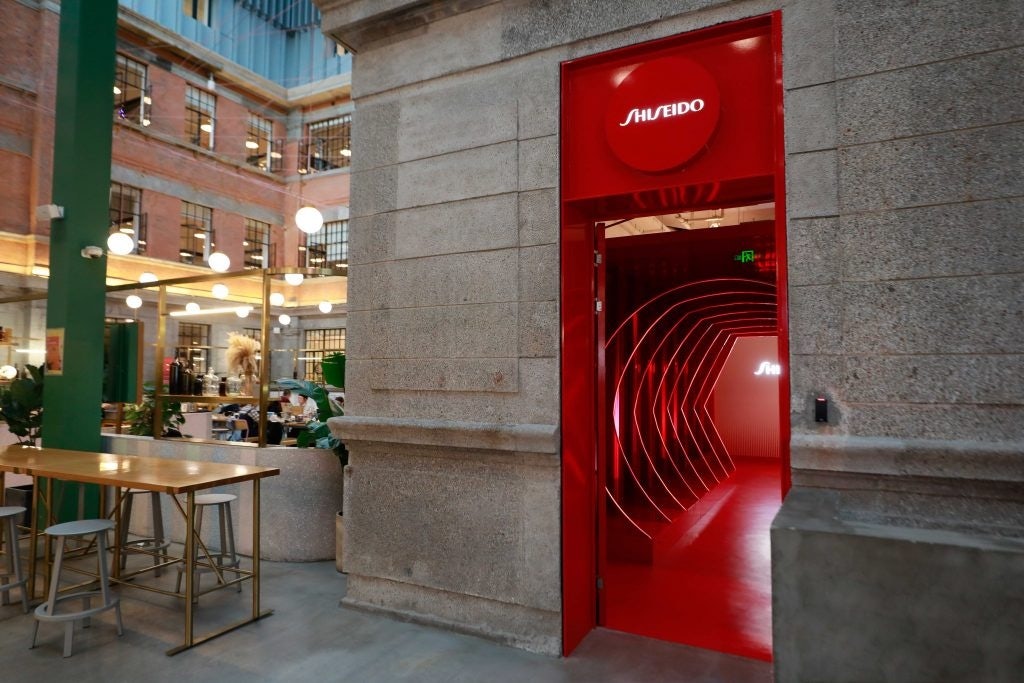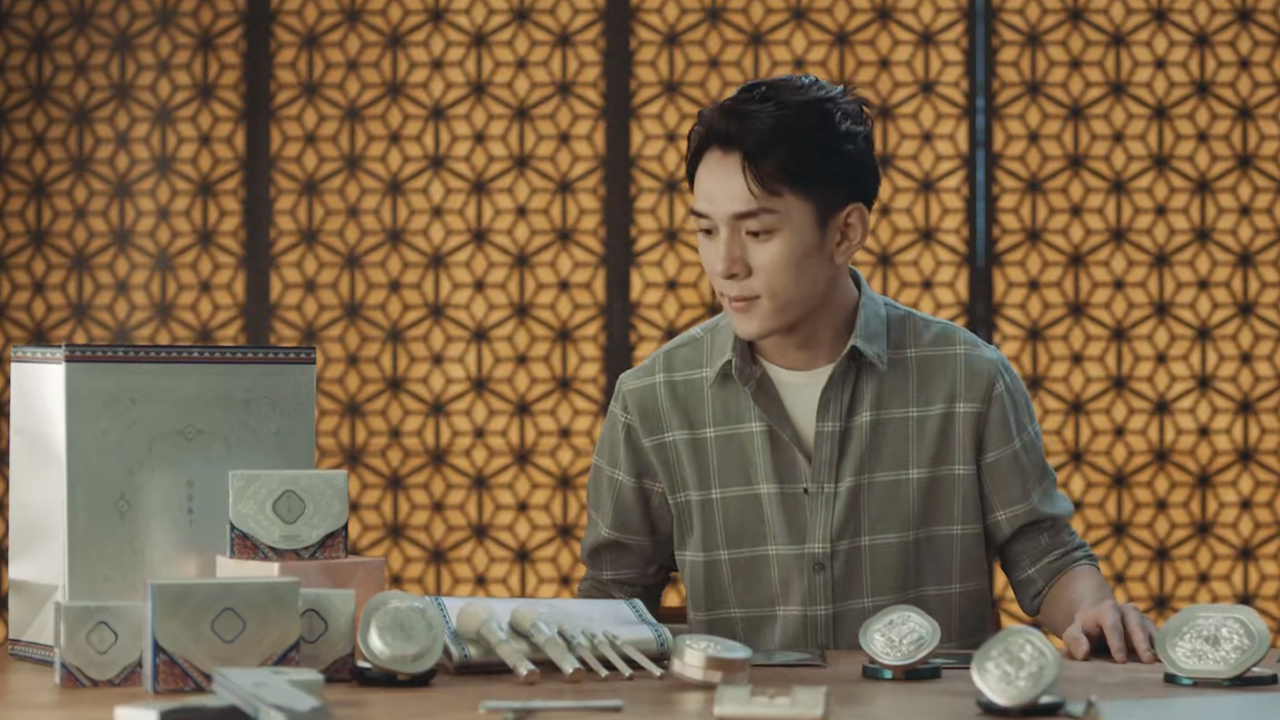Shiseido's Carol Zhou is the next highlight in Jing Daily’s community of individuals who have helped to build China’s booming luxury industry. This section profiles industry leaders who are contributing to the national and global fashion communities through their business practices, from designers and creatives to business executives and influencers.
At WeWork’s China flagship, where Shiseido’s China beauty innovation hub is based, Carol Zhou sat with us in a white T-shirt with her long hair in a bun. Her casual and approachable look fits in with the entrepreneurs and creative professionals who dotted the co-working space.
The head of the China business innovation and investment representative office has yet to spend much time at the innovation hub, which opened this January and quickly shut as the COVID-19 outbreak threw China into lockdown mode. During that time, Zhou was in the US visiting her family and had to work until two in the morning to sync her schedule with her China team of a dozen people.
Born in Guiyang, the capital of China’s Guizhou province in the southwest, Zhou and her family moved to the US when she was eight. Growing up, she aspired to be an artist and fashion designer until she decided to combine her interests in creativity and business. In 2003, while at NYU, she was chosen to be one of four trainees for Unilever’s brand management program and has been advancing her career in marketing ever since.
After directorial posts at L’Oréal, Burberry, and Marriott, Zhou became the VP of marketing at the Marriott and Alibaba joint venture before being tapped by Shiseido to spearhead its BI & I representative office in late 2018. It was exactly the challenge she craved. “To be honest, if it was a normal marketing job, I wouldn't have come,” she said matter-of-factly, "but it was an exciting opportunity to build everything from scratch... a new team, a new division, and we're creating something totally different in China for the Chinese consumer leveraging the dynamic ecosystem here.”
After establishing the representative office, Shiseido made further moves, including the opening of the WeWork-based hub in January and announcing in March that it would establish a new research branch of the existing China innovation center in Shanghai. Compared with the group’s renowned consumer-facing global innovation center in Japan, its innovation hub and the center are primarily focused on helping the main business capture consumer trends in China’s ever-changing market, which is planned to double in ten years.
Zhou met with Jing Daily to talk about how her team and Shiseido have managed the COVID-19 pandemic, her investment strategies, and the consumer trends that have accelerated over the past few months.
The innovation hub opened right before the first COVID-19 outbreak. What were your thoughts when it happened?#
I was in Tokyo for the annual group-wide meeting when Wuhan shut down. It was the Chinese new year at the time, so I went directly back to the States to visit my mother.
For [the innovation center], because we're not part of the ongoing business, which was really hit hard with the shutdowns, we actually continued in many of our projects. For one project, we were at the consumer research stage and had been planning to conduct in-home interviews. Instead of doing that, we did Zoom chats.
We were able to adapt quickly to remote working throughout COVID-19, so it didn't really affect the way our projects were progressing. But it did affect the way the company prioritized some of the projects. We needed to streamline and decide what to focus on and what to put on hold.

At a press event in January, Shiseido announced plans for a potential partnership with Meitu, a beautifying app that has invested a large sum in AI, and Uniskin, which specializes in gene detection. A joint venture with Japanese beauty device brand Ya-man was also recently announced. What kind of opportunities do you see by teaming up with these partners?#
I believe personalization is the future of everything. Back when we didn’t have data on people, we would sell one product to one thousand people. Now, with so much knowledge and data on each individual, we can accurately personalize the product, the experience, and the communication for each person because everyone is unique. No two people are the same, and the fragmentation of the market will continue.
So with that as the direction, we thought Uniskin was an interesting brand because they were one of the startups that we met when I first joined who used DNA analysis to understand your skin and have customized products for the various skin types based on the analysis. Shiseido has so much knowledge in skincare, and we can work together to create more personalized offerings for consumers.
Meitu is the largest beauty app company in China. They have deep knowledge and data from their database of consumers who use their app every day, and insights on what Chinese consumers consider beautiful or trendy. Ya-man is the top-selling beauty device company in both Japan and China. With this joint venture, we want to be the leader in providing beauty solutions by leveraging beauty devices with our skincare expertise to create new values for our consumers.
We’ve seen new China businesses gain an increasing market share (from 19% to nearly 24%) in H1 of 2020, as the first market to bounce back from COVID] What’s Shiseido’s strategic position and expectations in the China market?#
China has always been one of our most important markets. It is not the largest percentage-wise, but if you look at growth, China has been the fastest-growing market. Combined with travel retail, China is the most important market, especially after COVID-19, when China is the only region delivering on target.
What kind of consumer trends or insights have you seen over the last few months that you can share with our audience?#
Health and wellness have been a big trend for a while now, but it has been accelerated with COVID-19. In China, the wellness industry is not as developed as it is in the US. However, categories like supplements, fitness, and health F&B all contributed to the fast-growing concept of “healthy living.” Previously, I think people worked out to look good. But after COVID, people worked out to stay healthy and build immunity. Now people also realize that there is a mental part of isolation that needs care. So there is this shift in mindset.
C-beauty brands have been gaining great momentum and buzz among Chinese consumers, from budget-friendly Perfect Diary and Judydoll to higher-end skincare brands like Thanmelin (梵蜜琳). Does Shiseido feel threatened by this trend?#
I think the pie is just becoming larger. Younger consumers grew up in an era when they saw China’s economic growth in China and increasing global influence. They are more sophisticated and very savvy in terms of information gathering. They want to connect with their cultural heritage and are willing to see local brands as high-quality and desirable.
That created a perfect breeding ground for all of these young Chinese beauty brands, especially at the price point of 100 to 150 yuan. They are masters at catching consumer trends, discovering pain points, and accurately targeting these consumers with strategies that leverage China’s unique digital ecosystem. However, it takes much longer than two years to build a brand. So the question is: Can they all survive? The ones that do must go back to the fundamentals of building a brand and go back to the core of the value proposition.
For Shiseido, our strength is Japanese craftsmanship. Trying one’s hardest to achieve perfection is a concept that runs deep in the local culture. It is about always using the highest quality materials to create something with pride. That is why Shiseido has lasted almost 150 years. But with any old company, we need to adapt and transform to stay relevant. That’s why I think we have much to learn from these Chinese startups, and vice versa.

